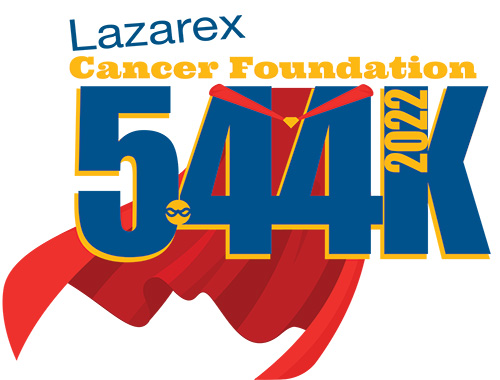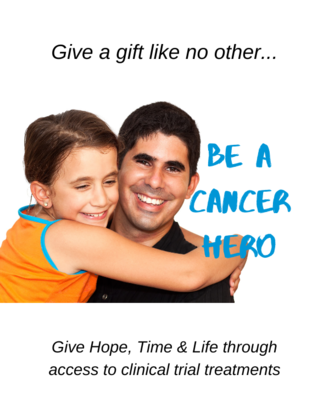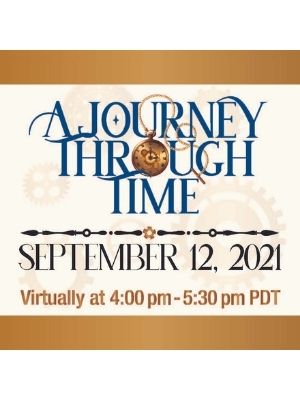How are you giving and who are you going to help?
By Dana Dornsife, philanthropist, entrepreneur, and founder of Lazarex Cancer Foundation
“When I was a boy and I would see scary things in the news, my mother would say to me, look for the helpers. You will always find people who are helping.”
Fred Rogers

This is such a wonderful quote. Mr. Rogers of course intended for this to help calm children, but I believe it’s a profound piece of wisdom for adults too. It comes to mind now because a year and a half into this pandemic, there is so much need all around us. It’s visible in staggering amounts in our own country and around the world. It’s easy to become overwhelmed in the face of so many challenges. But we also have a choice to ‘look for the helpers.’ They’re always there, as Mr. Rogers said.
So I have a question for you today, as we head towards the end of 2021 and the start of a New Year when many set their giving priorities for the next 12 months – How are YOU giving and how are YOU helping?
My husband and I are philanthropists. We have been very fortunate in life and we have chosen to give a considerable amount of our time, effort, and money to help others. How do we choose who to help and how much to give? It’s a question we get often, especially recently with so much need all around us as a result of the pandemic, social inequities, economic challenges, the She-cession and more.
We’ve decided to focus on education, health and environmental/sustainability issues but beyond that, there are a few principles that guide us. I’ll share them here in the hopes of offering new ways to look at giving of your time, energy, compassion, and money – today, for National Philanthropy Day – and in the coming weeks with Giving Tuesday on November 30, holiday giving through the end of 2021 and the start of a new year when many set their giving priorities for the next 12 months.
1) Philanthropy is about more than money, and anyone can give it. When people think about philanthropy, they think of large donations made by a few wealthy individuals. But philanthropy is really about giving in all forms. It’s about noticing a need and choosing to act on that – through the generosity of your time, empathy, acts of service and kindness to others to name a few. We all have the opportunity to decide how we’re going to use the resources we have. Contributing to the world around us is what will change our communities for the better.
2) Expand your horizons and help those beyond your circle. Disparities and inequities are huge and widening all the time and if we all only support who and what we know – it will be much harder to address these challenges and build more equitable and inclusive communities. Recognize your comfort zone and take a broader look at how you can support some of the most urgent pressing inequities we face today. For example, if you tend to only give to political causes, look for a non-political issue to support.
3) Give to communities and people in need. Data clearly shows that the pandemic has not only disproportionately affected economically disadvantaged and communities of color; it also vividly illustrates the negative outcomes related to access to care and participation in clinical trials.
People of all ages have died from COVID. There are new and painful chasms in many communities. The loss is palpable and the need for support is greater than ever. The disparate loss among poor and BIPOC communities is evident. As long as health disparities exist there will be no equality. We have to continue to search out and address the root causes of health disparities as we journey on the pathway to equality in this country.
4) Give to climate, environmental and sustainability causes. The climate crisis has created countless areas of need and philanthropy in this area increasingly recognizes not only vast environmental needs but also ‘climate justice.’ Whether you’re helping update a park in your community or giving to support clean water efforts. Giving in this area is important since a toxic environment can be a root cause of health disparities. By addressing climate change and creating clean environments you can rest assured you are helping to end some disparities in some of the most distressed communities in the US and globally.
What does philanthropy look like in my life? My husband and I have donated millions to several universities. We’re the world’s top investors in clean water projects in Africa and are Board and Council members of the Yosemite Conservancy. We’ve also provided funds to establish the Center on Racism and Health at Drexel University to research racial inequality and health disparities and I founded a nationwide non-profit, Lazarex Cancer Foundation, to improve the outcome of cancer care. Through Lazarex, my team and I work to improve equity in cancer clinical trials by reimbursing patients for travel costs (taxi, tolls, parking, airfare, hotels etc.) associated with FDA clinical trial participation. Now in our 15th year, we’ve spent nearly $10 million to help almost 7,000 cancer patients.
This pandemic has me asking who else can I help and how can I be most useful. It’s a question I ask myself not just on this day – but throughout the year. It’s a question I hope you will start regularly asking yourself too.
Dana Dornsife is the CEO and Founder of Lazarex Cancer Foundation, which she founded 15 years ago when she realized how many patients, including her late brother-in-law, needed financial assistance for the costs that come with FDA clinical trial participation. It is now the only national non-profit in the country that provides financial reimbursement for travel costs associated with participating in the research. Lazarex Cancer Foundation has assisted nearly 7,000 patients since its inception and continues to help more than 1,000 cancer patients per year during the COVID crisis.




